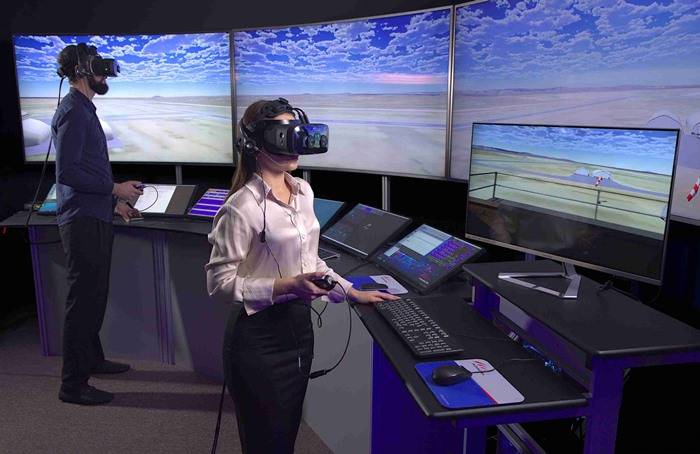From Chalkboards to VR: How Tech Revolutionized Air Traffic Controller Training
Air Traffic Controllers (ATCs) are the guardians of the skies, ensuring the safe and smooth flow of air traffic. But how are these vital professionals trained? Buckle up, as we take a historical journey through the evolution of Air Traffic Controller training, from traditional methods to the exciting world of virtual reality.
Early Days: Blackboard Briefings and Textbooks
In the early days of aviation, ATC training relied heavily on classroom instruction. Instructors used blackboards and detailed manuals to teach aspiring ATCs about airspace rules, procedures, and aircraft identification. While effective for laying the groundwork, this static approach couldn’t replicate the fast-paced and dynamic environment of real-world air traffic control.
The Simulation Revolution: Taking Training to New Heights
The invention of radar and advancements in computer technology ushered in a new era of ATC training. There are sophisticated simulators which mimicks real-world control towers and airspace scenarios. Trainees could now practice handling air traffic in a safe, controlled environment, making mistakes without jeopardizing actual flights.

image source
The Future is 3D: Virtual Reality Enters the ATC Training Room
Virtual Reality (VR) is poised to further revolutionize ATC training. Imagine trainees wearing VR headsets, completely immersed in a three-dimensional virtual airspace. They can interact with simulated aircraft, experience different weather conditions, and also practice handling emergencies in a realistic and highly immersive way. VR offers unparalleled training potential, promoting better decision-making skills and improved situational awareness for future ATCs.

image source
The Benefits of Technological Advancements
Technology has transformed ATC training in several ways:
- Increased Realism: Simulators and VR create a more realistic training environment as well as they prepare ATCs for the complexities of the job.
- Improved Efficiency: Training time can be optimized by allowing trainees to practice specific scenarios repeatedly.
- Enhanced Safety: By practicing in a simulated environment, ATCs can develop the skills to handle emergencies without risk to real passengers.
Looking Ahead: A Blended Approach
While technology plays a crucial role, traditional classroom instruction remains vital for establishing foundational knowledge. In this regard, the future of ATC training likely lies in a blended approach which combines the best of both worlds: classroom learning for theory and VR for practical application.
Further Reading:
- Federal Aviation Administration (FAA): https://www.faa.gov/air_traffic
- National Air Traffic Controllers Association (NATCA): https://www.natca.org/


